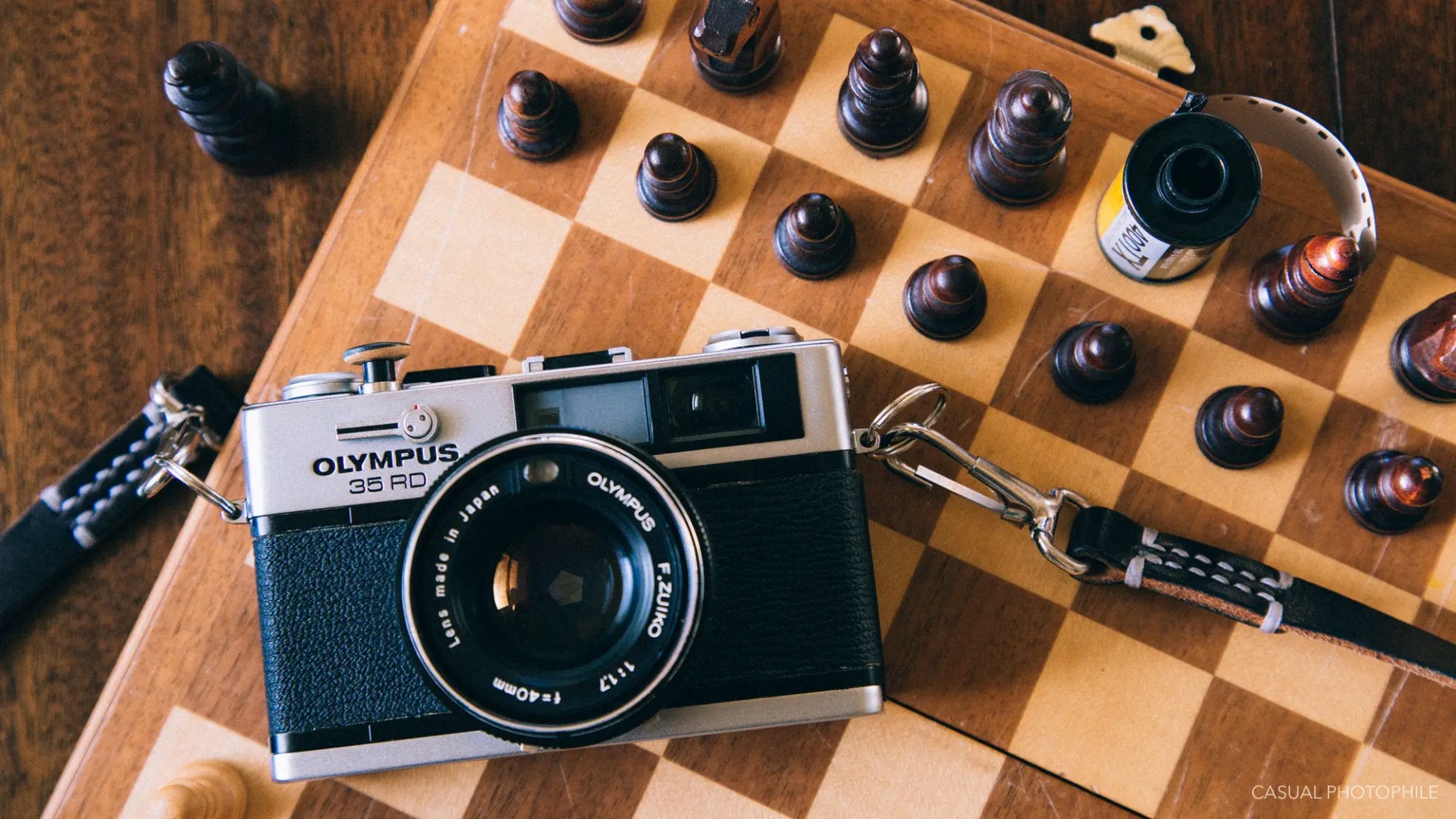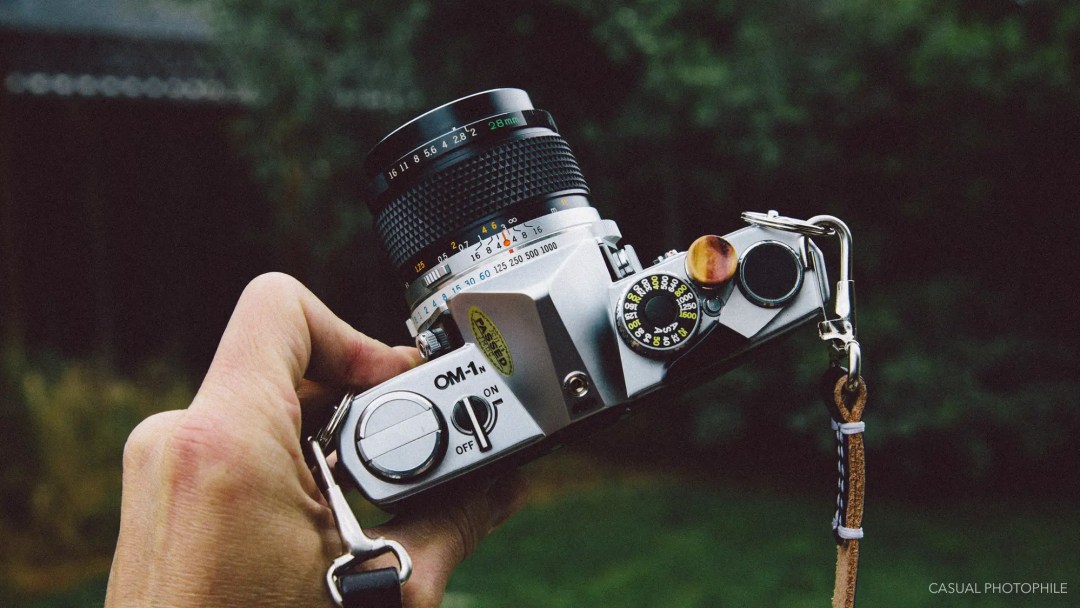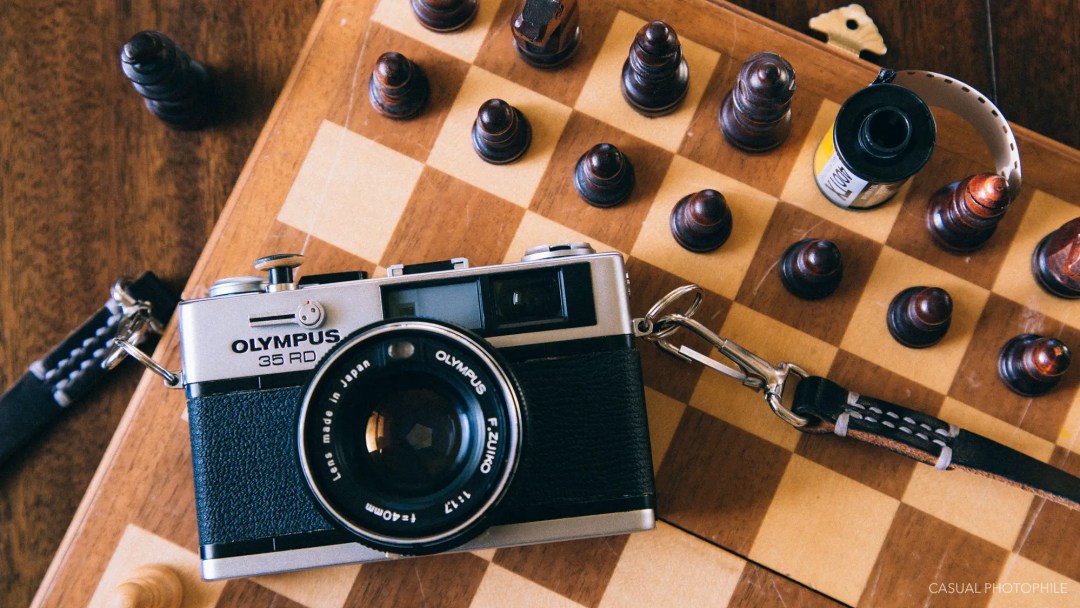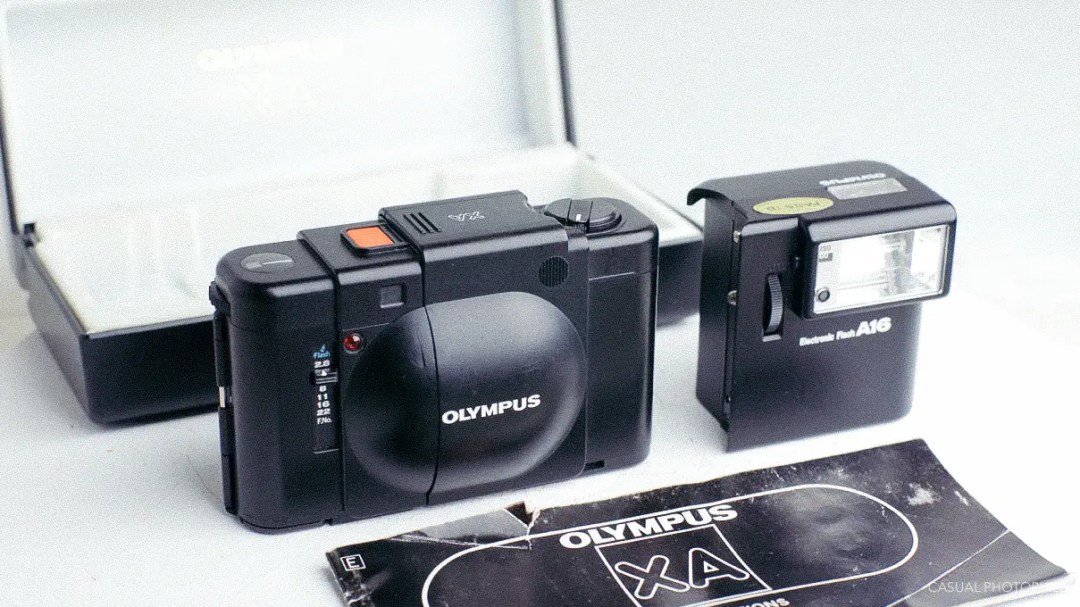We’re back with another installment of Desert Island Cameras, the recurring article in which we answer the question, “If you could only have one, which would it be?” That’s right – in a quest to help you choose the very best from the most popular camera brands, we’ve taken on the near-impossible task of paring down and choosing just one camera and lens we’d be happy to have for the rest of our lives.
Last time we talked about Nikon, and today we’re focused on an equally legendary (if slightly less popular) maker, Olympus. So which Olympus would the CP staffers pick if we could each only choose one? Here are our absolute, be-all-end-all, one-and-done, stuck-for-the-rest-of-our-lives Olympuses. Olympai? Whatever.
Josh’s Pick
The core of my desert island Olympus kit is the quintessential Olympus camera – the Olympus OM-1n. It’s elegant, portable, and versatile – all things for which Olympus film cameras came to be known over a long run of uninterrupted success.
The OM-1 body is Olympus’ most iconic design. With it, Olympus and designer Yoshihisa Maitani (after whom the OM is named) proved SLRs didn’t have to be bulky and ugly; they could be svelte and sexy. Its massive viewfinder and streamlined control layout makes the process of shooting simply beautiful. Olympus went on to evolve the all-mechanical OM-1 in subsequent models in the OM line by adding electronic doohickeys to it, but none of these cameras were quite as impactful as the original, which did no less than usher in a paradigm shift in the industry.
Paired with the minuscule OM-1 is my choice of lens, the equally small Zuiko 28mm f/3.5. On paper this lens might not look like much, but for those in the know, this is one of the brand’s best. Distortion is virtually nonexistent in this wide-angle lens, color rendition and contrast are stunning, and it’s sharp across the frame at virtually every aperture (yes, even sharper than its f/2.8 counterpart). Softness and vignetting show when shot wide-open but when the results look this good, who cares?
Pair the OM-1’s huge viewfinder with a wide-angle lens like the 28mm f/3.5 and what results is one of the finest wide-standard setups in 35mm photography, and a kit that could handle the bulk of any photo geek’s needs for an entire lifetime of shots. And in true Olympus fashion, it’s compact enough to take anywhere, even, say, a desert island.
For the full scoop on the OM-1, see James’ excellent review.
Buy it from our own F Stop Cameras
Dustin’s Pick
The task of selecting my “desert island Olympus” wasn’t one to be taken lightly. I shoot my Olympuses a lot (I own 4), and every one of them would happily comfort me ’til the moment of my expiration on some desolate, sandy rock. However, there is one Oly that holds a special place in my heart. It isn’t flashy or popular, but if I had to pick only one Olympus to last for the rest of my life, it’s the 35RD. Here’s why.
The 35RD is one of the smallest and lightest compact rangefinders Olympus ever produced, perfect for shooting all situations without slowing me down. Common to many premium, fixed-lens rangefinders of its era, the 35RD boasts a fast maximum shutter speed of 1/500th of a second and a lens capable of a maximum aperture of f/1.7, which is less common. The beauty of the RD is that it’s fully mechanical, relying on battery power solely for the meter. If the batteries die, the camera continues to shoot at every shutter speed.
The feather-damped, short throw film advance is lovely, and the focusing ring is extremely easy to turn, making rapid-fire snaps a piece of cake. Loading film is also a breeze. A simple pull of a tiny, recessed tab, and the door pops open. I rather prefer this design over the traditional rewind crank pull simply because I’m afraid i’m going to pop the thing clear off the body with any significant force. Of course, it does possess a shutter-priority auto mode, but using this little pocket rocket manually is just too good to resist.
All this praise said, the RD does come with a few quirks. Lackluster aperture ring ergonomics, a fixed rewind crank, and a tiny finder have been challenging, but the image quality I get from this lens make it worth the effort. The fixed 40mm f/1.7 Zuiko delivers razor sharp images with a classic vibe. I absolutely adore the rendering of this lens, even more so than any of my OM mount Zuikos (which is saying a lot).
The 35RD is somewhat of a rarity these days, and many users complain that a sticky shutter problem plagues neglected copies, but if the camera has been reworked with modern lubricants it will shoot beautifully for many decades still. My RD isn’t perfect, but a recent cleaning has reassured me that countless worry-free images lie ahead.
Buy it from our own F Stop Cameras
James’ Pick
If you haven’t yet figured it out based on Dustin and Josh’s picks, Olympus has historically been known for two things – exceptional technical ability, and incredibly compact size, and the camera I’ve chosen for my one-and-only showcases this design ethos more than any other Olympus. It’s the XA.
Just as with the OM-1, the XA was designed by legendary Olympus genius Yoshihisa Maitani, and his fingerprints are all over this thing (not literally, of course – that would be a real collector’s piece). It’s just about the smallest 35mm rangefinder camera ever made, handily out-tinying other compact rangefinders like the CLE and Canonet, and you might expect that this compact form factor means we’ve been cheated out of technical ability. Nothing could be further from the truth.
Not only is the XA exceedingly tiny, it also offers user-selectable aperture control, full manual focus with a built-in rangefinder mechanism, a superb metering system, and most amazing of all, aperture-priority auto-exposure. And if you think this compact size and incredible ability means we’ve been cheated out of decent image quality? Wrong again.
The XA has one of the finest and sharpest lenses ever fitted to a compact camera. Better than the Rollei 35, better than the Nikon L35AF, better than many interchangeable lens camera optics, it’s a lens that’s simply legendary. And unlike some “legendary” cameras, the XA actually deserves its reputation.
For these reasons (and some others that I’ll save for my upcoming review) the XA is the Olympus I’d choose if I could only choose one.
Buy it from our own F Stop Cameras
And that’s that. Our ridiculous list of desert island Olympuseses is complete. But not really, because we only put this list together to hear your opinions. Tell us in the comments what your “one-and-only” Olympus would be, whether you’re stuck on a sandbar or not!
Want an Olympus we didn’t pick?
Find one at our own F Stop Cameras
Find one on eBay
Find one at B&H Photo
Follow Casual Photophile on Facebook and Instagram
[Some of the links in this article will direct users to our affiliates at B&H Photo, Amazon, and eBay. By purchasing anything using these links, Casual Photophile may receive a small commission at no additional charge to you. This helps Casual Photophile produce the content we produce. Many thanks for your support.]






They all need batteries. Regret the battery shop on my desert island closed some time ago 🙁 Ignoring batteries, I would opt for either an OM-1 or a Pen F, probably the Pen F, as if the battery shop has closed, the film shop will follow on soon afterwards and you get twice as many shots per roll out of your Pen F.